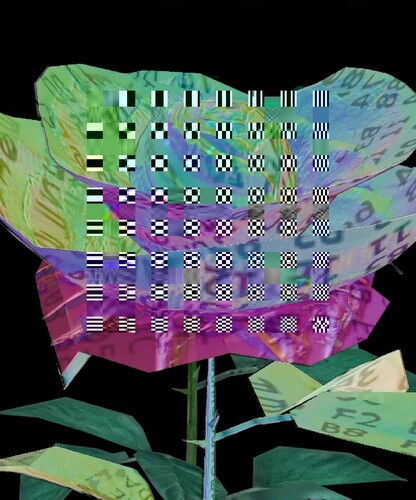The crack of a whip on a horse’s back outside his window, Schopenhauer famously lamented, would lacerate his brain and quash every thought in its infancy. In “The Concept of Noise,” which we are happy to be able to republish here, Steven Sands and John Ratey can be credited with first spelling out the cognitive dimension of the predicament that Schopenhauer so lamented, offering the following definition of the “mental state of noise”: “By ‘noise,’ we mean an internally experienced state of crowding and confusion created by a variety of stimuli, the quantity, intensity and unpredictability of which make it difficult for individuals so afflicted to tolerate and organize their experience” (Sands and Ratey 290). However, noise, in this enlarged and cybernetically inflected sense, now alludes to a relation between contingency and control, which includes but is no longer limited to the experience of unwanted sound. In the past few decades this novel, cybernetic conception of noise has become synonymous with the complexity of our world and its global digitised information networks. As the economist Fischer Black put it so adroitly in his seminal paper from 1986, simply entitled “Noise”:
the effects of noise on the world, and on our views of the world, are profound. Noise in the sense of a large number of small events is often a causal factor much more powerful than a small number of large events can be. (529)
The fact is, however, that noise is increasingly being thought not only as deleterious, but also as potentially generative of functional aspects. This novel approach to noise has become central to our understanding of emergent patterns and complex organisation. Every empirical field, from variations in population genetics to financial forecasting, from urban planning to climate change, is tributary to this profound shift in the theorisation of noise – not to mention a century of musical and artistic reckonings with noise and randomness as an explicit resource for artistic creation.
This calls for a reconceptualisation of the concepts and functions of noise within varied systems of thought and prediction, which this special issue honours through the diversity of its outstanding contributors and the innovative perspectives they contribute. Yagmur Denizhan proposes a sophisticated closed-loop scheme as a diagram for intelligent processes, while Inigo Wilkins approaches the concept of noise through an exploratory excursion into topos theory. Joshua Bacigalupi and Sha Xin Wei develop original perspectives on creativity, notably intersecting in Gilbert Simondon’s concepts of the virtual and of “disparation.” Feng Zhu and Luca Possati explore our interaction with new technologies, conceptualising noise in relation to an “attentional style of delayed and shifting categorization” (Zhu), but also in terms of a resistance consisting in a form of “antimediation” (Possati). Sonia de Jager and Naomi Waltham-Smith tackle the political implications of noise, in relation to both natural language processing (NLP) (de Jager) and dealing with the inconvenience of non-relational forms of sovereignty (Waltham-Smith), while Patrick ffrench and Catherine Malabou open novel perspectives on the liminality of noise in post-semiotic French thought. Yuk Hui concludes this special issue with a meditation on an axiology of contingency. Framing the issue is Rosa Menkman’s iconographic contribution, “The Shredded Hologram Rose.”
This multiple-angled approach, whose cohesion scales the obstacles of disciplinary boundaries, is complemented by the simultaneous publication of its counterpart in Rue Descartes, entitled Noise: Lessons from an Unhinged Empiricism, and which takes artistic practice as its stimulus, counting among its contributors philosophers who are also composers, performers and artists in their own right.Footnote1
Issue image: Rosa Menkman, The Shredded Hologram Rose (2021–23). Reproduced by kind permission.
Notes
1 Articles in Rue Descartes, Noise: Lessons from an Unhinged Empiricism, include: J.-P. Caron, “Strategies for Architecture: Noise Praxes and Structures of Determination / Stratégies pour l’architecture: pratiques bruitistes et structures de détermination”; Matthieu Saladin, “Noise Pareidolia / Paréidolie noise”; Reynaldo Young, “An Education in Noise / Une éducation dans le bruit”; Cécile Malaspina, “Contemporary Hecuba: On Transcendental Noise / Hécube contemporaine: à propos d’un bruit transcendental”; Mattin, interviewed by Cécile Malaspina, “It is Easier to Imagine the End of the World than an Alternative to the Liberal Individual / Il est plus facile d’imaginer la fin du monde qu’une alternative à l’individu liberal”; a review of Social Dissonance, by Antoine Chessex; “TR 34; ISTANBUL,” photographic series by Maria Sewcz and text by Cécile Malaspina; and in the Epistemology section annexed to this special issue dossier: “On the Role of Uncertainty in the Information Economy / Du rôle de l’incertitude dans l’économie de l’information” by Anna Longo. www.ruedescartes.org.
bibliography
- Black, Fischer. “Noise.” The Journal of Finance, vol. 41, no. 3, July 1986, pp. 528–43. Wiley Online Library, https://doi.org/10.1111/j.1540-6261.1986.tb04513.x.
- Sands, S., and J.J. Ratey. “The Concept of Noise.” Psychiatry, vol. 49, no. 4, Nov. 1986, pp. 290–97.
- Schopenhauer, A. “Über Lärm und Geräusch.” Parerga und Paralipomena, 2. A.W. Hain, 1851, pp. 517–19, de.wikisource.org/wiki/Ueber_Lerm_und_Ger%C3%A4usch.

